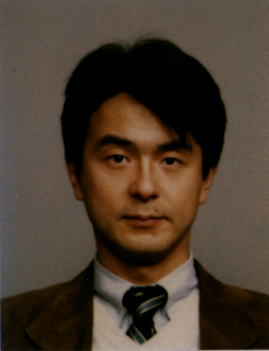Last Update 09/04 2003
Research: Taking advantage of applied mechanism and mathematics for solid continuum, we seek to clarify various phenomena related to earthquakes and crust deformation and to propose realistic solutions to mitigate possible disasters. At this moment, we are concentrated on developing advanced simulation methods that are based on clarified mechanism. Publications: K. Terada, M. Hori, T. Kyoya and N. Kikuchi, Simulation of the multi-scale convergence in computational homogenization approach, International Journal of Solids and Structures, 37, 2285--2311, 2000. T. Ichimura and M. Hori, Macro-micro analysis for prediction of strong motion distribution in metropolis, 土木学会論文集, 17, 2, 175--185, 2000. M. Hori and K. Oguni, Bifurcating initiation and evolution of periodic micro-defects, Materials Science and Engineering, A285, 122--129, 2000. M. Hori, T. Kameda and T. Kato, Prediction of stress filed in Japan using GPS network data, Earth Planets Space, 52, 1101--1105, 2000. M. Hori, T. Kameda and T. Kato, Application of stress inversion method to predict stress distribution in Japanese Islands, Geophys. J. Int., 144, 597--608, 2001. M. Hori, Inverse analysis method using spectral decomposition of Green’s function, Geophys. J. Int., 147, 77--87, 2001. M. Hori and T. Kameda, Inversion of stress from strain without full knowledge of constitutive relations, J. Mech. Phys. Solids, 49, 1621--1638, 2001. M. Anders and M. Hori, Three-dimensional stochastic finite element method for elasto-plastic body, Int. J. Numer. Meth. Engng., 51, 449--478, 2001. I. Sasaki, K. Terada, K. Ikeda and M. Hori, Appropriate number of unit cells in a representative volume element for micro-structural bifurcation encountered in a multi-scale modeling, Comput. Methods, Appl. Mech. Engrg., 191, 2561--2585, 2002. M.L.L. Wijerathne, Kenji Oguni and Muneo Hori, Tensor field tomography based on 3D photoelasticity, Mechanics of Materials, 34, 9, 533--545, 2002. M. A-B. Abdo and M. Hori, A numerical study of structural damage detection using changes in the rotation of mode shapes, Journal of Sound and Vibration, 251, 2, 227--239, 2002. 北代州平,堀宗朗, P波を利用した大地震発生検知手法を構築するための基礎的研究, 土木学会論文集, 710, I-60, 153--164, 2002. M. Hori, M. Anders and H. Gotoh, Model experiment and numerical simulation of surface earthquake fault induced by lateral strike slip, Structural Eng./Earthquake Eng., JSCE, 19, 2, 227--236, 2002. M. Hori, Recent Advancement of Earthquake Engineering and Seismology, International Conference on the Application and Evaluation of High-Grade Linepipes in Hostile Environments, Yokohama, Japan, November 7-8, , 2002. M. Hori, Model experiment and numerical analysis of surface rupture process and formation of echelon faults, U.S.-Japan seminar on seismic disaster mitigation in urban area by geotechnical engineering, Ankoledge, USA, June 26 & 27, , 2002. S. Nemat-Nasser and M. Hori, Micromechanics: Overall Properties of Heterogeneous Materials (second edition), Elsevier, New York, 1998. 村上章・登坂宣好・堀宗朗・鈴木誠, 鈴木誠:有限要素法・境界要素法による逆問題解析―カルマンフィルタと等価介在物法の応用―, コロナ社, 2002. |
